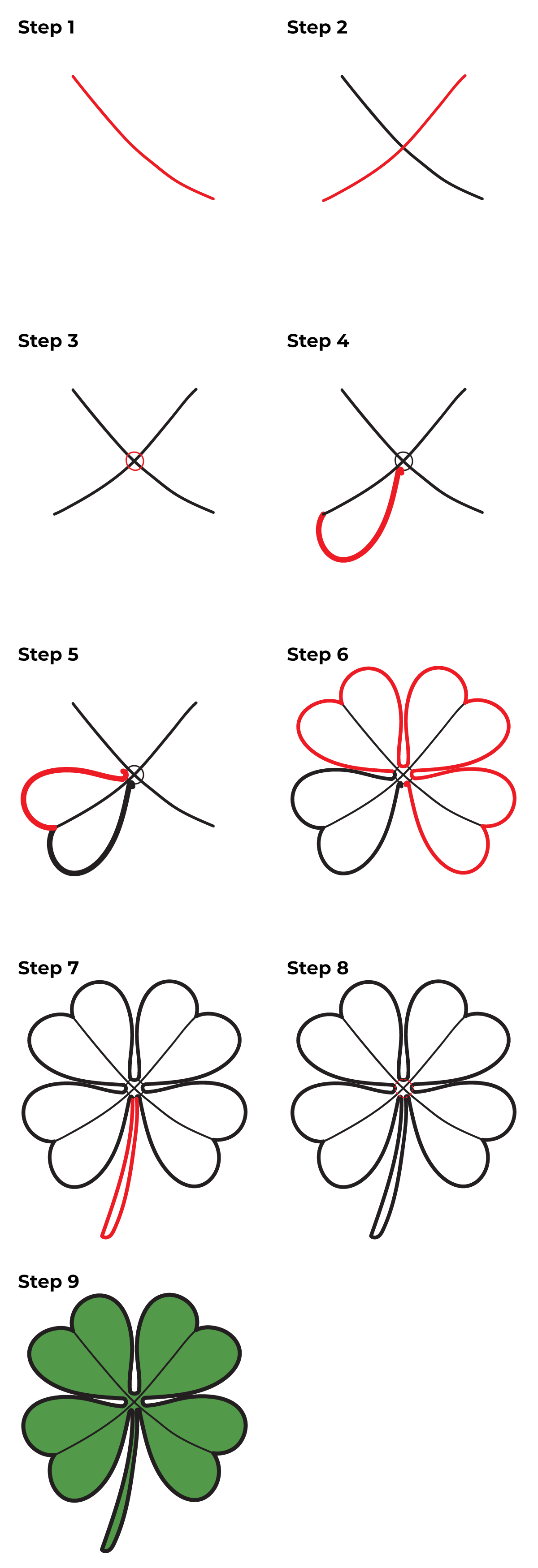How To Press A Four Leaf Clover

Imagine a sun-drenched meadow, buzzing with bees and alive with the scent of wildflowers. You're on your knees, carefully parting the sea of green, eyes scanning for that elusive anomaly – a four-leaf clover, a tiny emblem of luck and good fortune. The thrill of discovery is palpable as you gently pluck it from the earth, its delicate leaves promising a touch of magic.
Whether you're a seasoned collector or a first-time finder, preserving this rare treasure requires a gentle touch. This article provides a comprehensive guide on how to press a four-leaf clover, ensuring its beauty and supposed luck endures for years to come. From traditional methods to modern techniques, we'll explore the secrets of successful clover preservation.
The Enduring Appeal of the Four-Leaf Clover
The four-leaf clover has captivated cultures for centuries, its rarity fueling myths and legends. Each leaf is said to represent something different: faith, hope, love, and luck. The exact origins of this symbolism are debated, but its widespread appeal is undeniable.
Finding a four-leaf clover is often attributed to chance, making it a symbol of serendipity and good fortune. Some believe it possesses magical properties, protecting the bearer from harm or attracting positive outcomes. This belief is deeply embedded in folklore and traditions across various cultures.
A Brief History
The earliest mentions of the four-leaf clover's significance can be traced back to ancient Celtic traditions. Druids, the priests of Celtic society, revered the clover and believed it possessed protective powers against evil spirits. The rarity of the four-leaf variety only amplified its perceived potency.
Over time, the symbolism of the four-leaf clover spread throughout Europe and eventually to other parts of the world. Today, it remains a popular symbol of luck, often incorporated into jewelry, charms, and other decorative items.
Traditional Pressing Methods
The most common and time-tested method for pressing a four-leaf clover involves using heavy books. This technique is simple, readily accessible, and requires minimal supplies. However, patience is key, as the drying process can take several weeks.
Step 1: Gathering Your Supplies
You will need: Your four-leaf clover, a heavy book (preferably one with smooth, unprinted pages), blotting paper or paper towels, and a clean, dry surface.
Step 2: Preparing the Clover
Gently brush off any dirt or debris from the clover. Place it between two sheets of blotting paper or paper towels. This will help absorb moisture and prevent mold growth.
Step 3: Pressing the Clover
Open the heavy book to a section in the middle. Place the blotting paper containing the clover inside. Close the book and add weight on top, such as more books or heavy objects.
Step 4: Waiting Patiently
Allow the clover to press for at least two to three weeks. Check on it periodically, replacing the blotting paper if it becomes damp. Once the clover is completely dry and flattened, it's ready to be displayed or stored.
Modern Pressing Techniques
While the book method remains popular, alternative techniques can expedite the pressing process and offer more control over the final result. These methods often involve using specialized equipment, such as flower presses or microwave presses.
Using a Flower Press
A flower press is a purpose-built device designed for drying and flattening flowers and other plant materials. It typically consists of two wooden boards held together by screws or straps, allowing for even pressure distribution.
To use a flower press, place the clover between layers of blotting paper and cardboard. Tighten the screws or straps gradually, ensuring the pressure is evenly distributed. Check the clover regularly and replace the blotting paper as needed. The drying time is typically shorter than with the book method, often taking only a week or two.
Microwave Pressing (Use with Caution)
Microwave pressing is a rapid method that uses microwave energy to quickly dry plant material. However, it requires careful monitoring to prevent burning or damage to the clover.
Place the clover between sheets of microwave-safe paper towels. Microwave in short bursts of 10-20 seconds, checking the clover after each interval. Continue until the clover is dry and flattened. This method is quick but carries a higher risk of damaging the clover if not carefully monitored.Always exercise extreme caution when using a microwave for this process.
Tips for Preserving Your Pressed Clover
Once your four-leaf clover is successfully pressed, proper storage is essential to preserve its beauty and prevent deterioration. Here are some tips for long-term preservation:
Storage Options:
Consider laminating the pressed clover to protect it from moisture and physical damage. Alternatively, you can store it in a sealed airtight container, such as a shadow box or a display case. Placing it in a frame is another great option.
Protection from Light:
Exposure to direct sunlight can cause the clover's color to fade over time. Store your pressed clover in a dark, dry place away from direct sunlight.
Handling with Care:
Pressed clovers are delicate and can easily be damaged. Handle them with care and avoid excessive touching or bending.
The Significance of Finding (and Keeping) Luck
Beyond the practical aspects of pressing a four-leaf clover, there's a deeper significance to the act itself. It's a way of capturing a moment of serendipity and preserving a tangible reminder of good fortune. The simple act of preserving it can feel empowering.
Whether you believe in the clover's magical properties or simply appreciate its aesthetic beauty, preserving it allows you to hold onto a symbol of hope and positivity. It's a connection to nature, to folklore, and to the enduring human desire for luck and happiness.
The pressed clover can become a cherished keepsake, a reminder of a special moment, or a thoughtful gift for someone you care about. It's a small token that carries a wealth of meaning and symbolizes the enduring power of hope and good fortune. Sharing it with loved ones connects you even more strongly to the intention of spreading luck.
In a world often characterized by uncertainty and challenges, the four-leaf clover serves as a gentle reminder to embrace the unexpected, to find joy in the small things, and to believe in the possibility of good fortune. Pressing a four-leaf clover isn't just about preserving a plant; it's about preserving a little bit of magic.


















